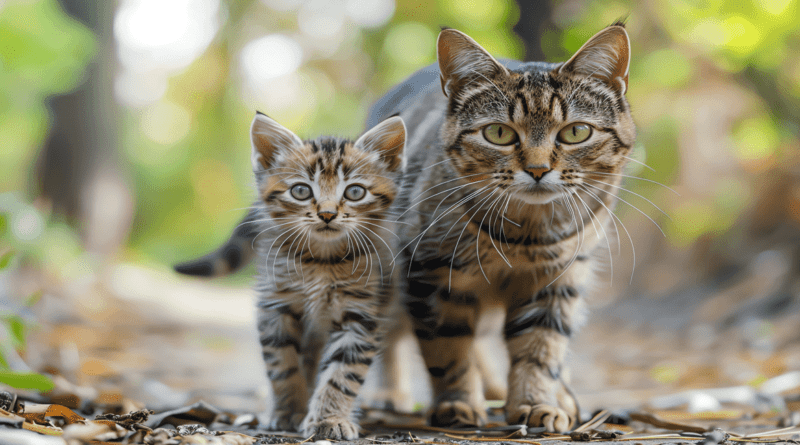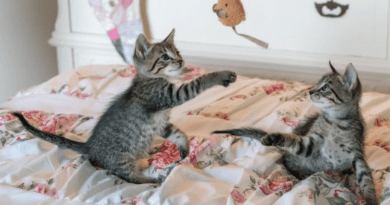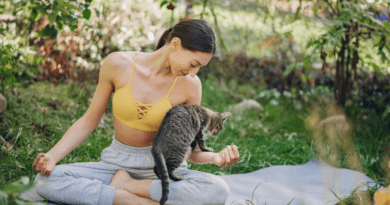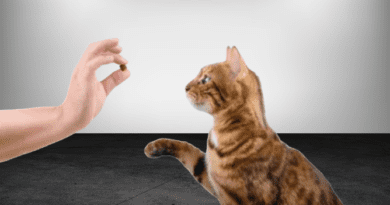Changes in Behavior with Age
Changes in Cat Behavior with Age
As cats grow older, their behavior changes in subtle yet significant ways. These changes often stem from natural aging processes that impact physical abilities, cognition, and overall health. Understanding these shifts helps cat owners provide better care, adapt to new needs, and ensure a comfortable life for their feline companions.
1. Kittenhood (0-6 Months)
In the earliest stages of life, kittens exhibit high energy and curiosity. They explore their surroundings and engage in playful behaviors like pouncing, chasing, and climbing. Socialization during this period is crucial. Kittens learn essential skills through interactions with their mother, siblings, and human caregivers. Proper exposure to different stimuli helps them develop confidence and reduces fear later in life.
Training should start early. Litter box habits, scratching post usage, and basic commands can all be introduced during kittenhood. Playtime is also vital for physical and mental development. Toys that stimulate hunting instincts, such as feather wands and balls, keep kittens engaged and teach coordination.
2. Adolescence (6 Months to 2 Years)
As cats transition from kittenhood into adolescence, their behavior can become more independent and assertive. They still have high energy levels but may start testing boundaries. Some cats may display territorial behaviors, such as marking with scent or urine. This is common in unneutered or unspayed cats, and early sterilization can help prevent such habits.
Adolescent cats may also exhibit mood swings. One moment, they might seek affection, and the next, they could prefer solitude. Owners should respect these mood shifts while maintaining routines for feeding, grooming, and play. Consistent routines provide structure, helping to manage any challenging behaviors that arise.
3. Prime Years (2-6 Years)
In their prime years, most cats settle into a more predictable behavior pattern. They maintain a balance between activity and rest. Cats at this stage may still enjoy bursts of energy during play sessions but also relish long naps. Their personality becomes fully formed, with some cats displaying more affection, while others might remain independent.
Routine checkups with a veterinarian are essential during this period. Dental health, weight management, and vaccination updates keep your cat healthy. Owners should also focus on environmental enrichment, such as interactive toys, climbing structures, and access to safe outdoor spaces. These additions reduce boredom and stimulate your cat’s mental faculties.
4. Middle-Aged Cats (7-10 Years)
Behavioral changes become more noticeable as cats enter middle age. They may slow down physically and sleep more. Activity levels decrease, and some cats may start to gain weight due to reduced movement. Owners should monitor their cats’ diet and encourage regular exercise through play or puzzle feeders. Weight gain can lead to health issues like diabetes or arthritis.
Cognitive changes may also start appearing. Cats might seem confused or disoriented at times. They could forget familiar routines or locations. Increasing mental stimulation during this period helps slow cognitive decline. Interactive toys, new experiences, and regular social interaction keep their minds sharp.
Middle-aged cats often show more affection and attachment to their human caregivers. They may seek more lap time or follow their owners from room to room. This stage strengthens the bond between the cat and their family, making shared time even more valuable.
5. Advanced Age (11-14 Years)
At this stage, physical limitations become more apparent. Cats may struggle with mobility, often due to joint stiffness or pain. Jumping on high surfaces, climbing stairs, or using litter boxes with high sides can become challenging. Owners should modify the environment to accommodate these changes. Installing ramps, providing low-sided litter boxes, and offering soft bedding make a significant difference in comfort.
Cats may also become more vocal as they age. Increased meowing could indicate discomfort, confusion, or a need for attention. Owners should pay close attention to these vocalizations and consult a veterinarian if they suspect any underlying health problems.
Advanced age often brings a decrease in sensory functions. Vision or hearing impairments may develop, causing a cat to be more cautious or hesitant in their movements. Adjusting the home environment to ensure safety and ease of navigation becomes crucial. Placing food, water, and litter boxes in accessible locations helps avoid unnecessary strain on your cat.
Routine veterinary visits are more important than ever during this stage. Annual checkups allow for early detection of health problems like kidney disease, hyperthyroidism, and arthritis. Medications, special diets, or supplements may be recommended to manage these conditions and maintain your cat’s quality of life.
6. Late Stage (15+ Years)
In the final stage of life, cats often become frail and require extra care. Behavioral changes can be pronounced. They may sleep most of the day and show little interest in play. Appetite can decrease, and weight loss may occur. Regular hydration and nutritious meals are critical at this point. Some cats may benefit from a specialized diet tailored to their specific health needs.
Cognitive decline can progress, leading to increased confusion or even signs of feline cognitive dysfunction (FCD). Cats might forget where their litter box is, or they could become disoriented in familiar surroundings. Patience is key during this stage. Owners should provide extra care, guidance, and comfort.
While physical abilities diminish, emotional attachment remains strong. Cats may seek more companionship and enjoy quiet moments with their owners. Providing comfort and gentle affection makes these final years more peaceful.
7.Understanding Behavior as Cats Age
As cats age, their behavior undergoes various transformations, from the playful exuberance of kittenhood to the calm and reserved nature of their later years. Understanding these shifts helps owners anticipate their cat’s needs and adjust their care routine accordingly. Monitoring physical, emotional, and cognitive changes ensures that cats remain comfortable and well-cared-for throughout their lives.
By paying attention to these behavioral changes, you can provide a nurturing environment that supports your cat’s well-being at every stage. From offering new forms of enrichment during adolescence to providing more physical comfort in later years, the journey of caring for an aging cat strengthens the bond between you and your feline companion.




